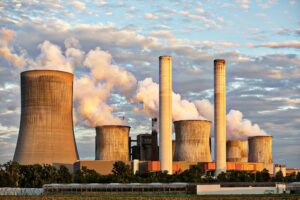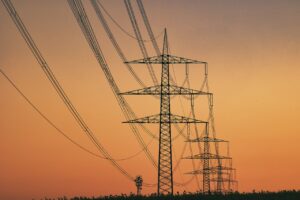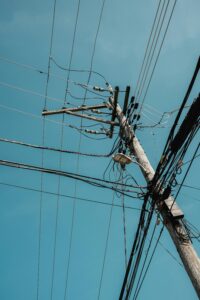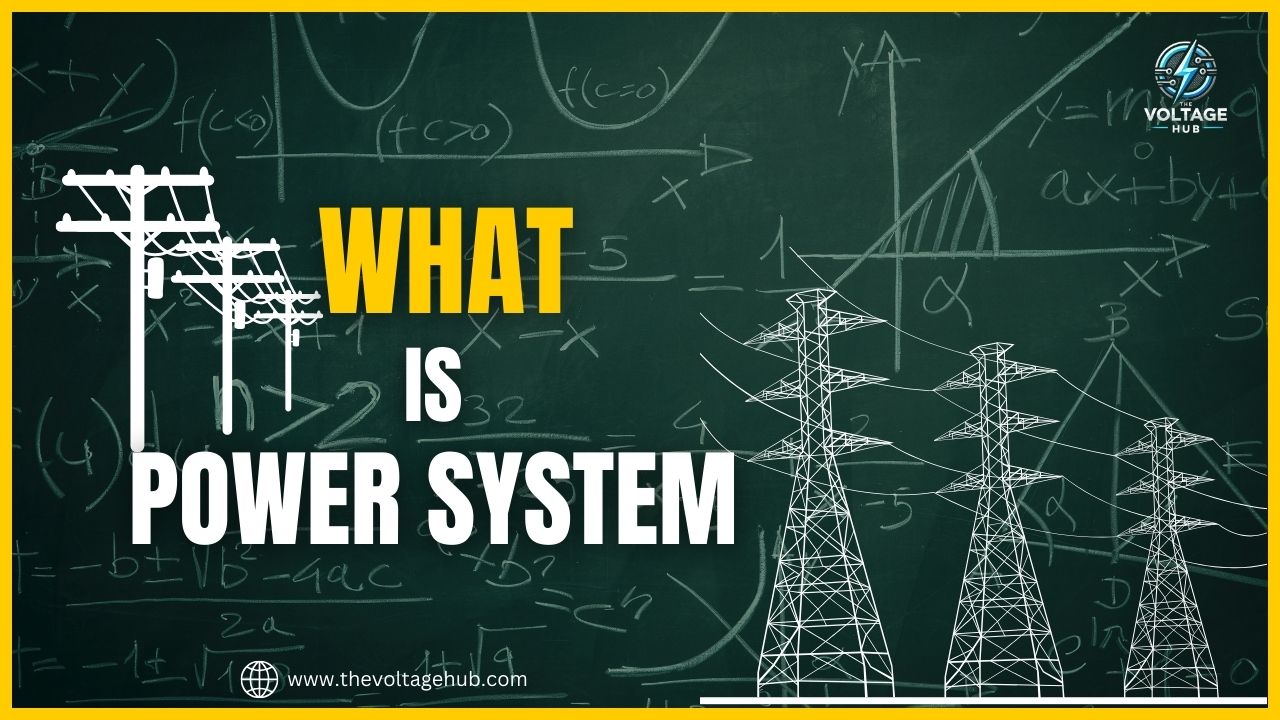Table Of Content
Electricity is indispensable in modern society. It powers homes, industries, transportation systems, and communication networks. The intricate infrastructure that supports this electrical power is known as the electrical power system. This system is responsible for generating, transmitting, and distributing electrical energy in a manner that is reliable, efficient, and scalable. Understanding power systems, their historical development, and their importance in contemporary infrastructure is essential for grasping how society and industries function in today’s world.
Overview of Electrical Power Systems
The electrical power system is an integrated network designed to provide electrical power to consumers. It involves three main components: generation, transmission, and distribution. Each component works in unison to ensure a continuous and efficient power supply.
Power Generation
Power generation is the process by which raw energy is converted into electrical energy. Power plants use a wide range of energy sources to produce electricity. These energy sources can be classified into two categories: non-renewable and renewable sources.
 Thermal Power Plants (Non-Renewable)
Thermal Power Plants (Non-Renewable)
Thermal power plants use the heat from the combustion of fossil fuels like coal, oil, and natural gas to generate steam. This steam drives turbines connected to generators that produce electricity.- Coal Power: Coal is burned to produce heat, which generates steam. This process is prevalent due to its historical availability and cost-effectiveness. However, coal plants contribute significantly to carbon emissions and air pollution.
- Natural Gas Power: Natural gas is considered cleaner than coal, emitting less carbon dioxide per unit of energy. Combined-cycle gas turbine (CCGT) plants offer high efficiency by utilizing both gas and steam turbines.
- Hydropower (Renewable)
Hydropower uses the kinetic energy of flowing water to drive turbines, which in turn generate electricity. Hydroelectric dams are built on rivers to store water in reservoirs. When the water is released, it flows through turbines and generates electricity. This method is one of the oldest and most reliable forms of renewable energy, contributing to global energy supply. - Nuclear Power (Non-Renewable)
Nuclear power plants generate electricity using the heat produced from nuclear fission reactions. The fission of uranium or plutonium atoms produces large amounts of energy, which is used to heat water and produce steam. Nuclear power is highly efficient, but it raises concerns about radioactive waste disposal and the potential for accidents. - Renewable Energy Sources
- Solar Power: Converts sunlight directly into electricity using photovoltaic (PV) panels.
- Wind Power: Uses the kinetic energy of the wind to turn turbines that generate electricity.
- Geothermal Power: Harnesses heat from beneath the Earth’s surface to produce electricity.
- Biomass: Organic materials like wood, agricultural residues, and waste can be burned or converted to biofuels to generate electricity.
Power Transmission
Transmission refers to the transfer of electricity from power plants to substations. Because electricity faces significant losses during transmission, it is sent through high-voltage lines that minimize energy losses by reducing the current. High-voltage transmission is crucial for long-distance power transport, and transformers play a key role in stepping up the voltage before transmission and stepping it down for safe use in homes and businesses.

- AC vs. DC Transmission:
Historically, alternating current (AC) was the preferred method for electricity transmission due to its ability to be easily transformed into higher or lower voltages. However, direct current (DC) is now gaining popularity for long-distance transmission through high-voltage direct current (HVDC) lines because of its lower losses over vast distances. - Substations:
Substations are essential nodes in the transmission network where voltage is converted and electricity is routed to local distribution networks.
Power Distribution
The final stage of the power system is distribution, which involves delivering electricity to homes, businesses, and industrial sectors. Distribution networks use lower-voltage lines to ensure that electricity reaches consumers safely and efficiently.

- Distribution Networks: These networks include power lines, transformers, and meters, ensuring that electricity is delivered reliably to end-users.
- Smart Grids: The implementation of smart grid technologies has revolutionized distribution systems. Smart grids use sensors and real-time data to optimize the flow of electricity, reduce losses, and improve the reliability of the grid.
Key Components of Power Systems
- Generators: The devices that convert mechanical energy into electrical energy.
- Transformers: Devices used to change the voltage of electricity, allowing it to be transmitted over long distances.
- Circuit Breakers and Relays: Critical for system protection, they disconnect electrical circuits in case of faults to prevent further damage.
- Transmission Lines: Carry electricity from power plants to substations and eventually to distribution systems.
Historical Development of Power Systems
The development of electrical power systems is a story of innovation, discovery, and progress. From the first rudimentary electric light bulbs to the modern smart grid systems, the history of power systems has been marked by several transformative milestones.
Early Discoveries
- Michael Faraday (1831): Faraday’s discovery of electromagnetic induction formed the basis of electric generators. By moving a magnet through a coil of wire, Faraday demonstrated that electricity could be generated without the need for batteries or other external power sources.
- Thomas Edison (1879): Edison is perhaps best known for his invention of the incandescent light bulb, which marked the beginning of widespread electrical use in homes and industries. He also pioneered direct current (DC) systems for electricity generation and distribution.
The War of Currents (1880s)
One of the most significant events in the history of power systems was the rivalry between direct current (DC) championed by Edison and alternating current (AC), promoted by Nikola Tesla and George Westinghouse.
- Direct Current (DC): Initially, DC was preferred for its simplicity, but it faced significant limitations in long-distance power transmission due to high energy losses.
- Alternating Current (AC): AC systems were able to transmit power over much longer distances efficiently due to the ability to use transformers to adjust voltage levels. Tesla’s work with Westinghouse proved superior, and AC became the global standard.
Expansion of Power Systems (1920s – 1950s)
The rise of national power grids marked a new era for electricity distribution. In the 1920s, the U.S. saw the establishment of large interconnected systems, allowing electricity to be transported across vast distances. This period also saw the rise of hydroelectric power as a key energy source, especially in countries like the U.S. and Canada.
- 1930s: The Electrification of Rural America under the New Deal brought electricity to rural areas, significantly improving the quality of life and sparking economic growth.
Post-War Developments
After World War II, power systems underwent significant expansion. The growth of nuclear energy in the 1950s and 1960s introduced a new source of power. Nuclear plants provided large amounts of electricity with low carbon emissions, though concerns over waste disposal and plant safety persisted.
The Oil Crisis and Renewable Energy (1970s)
The 1970s oil crisis prompted governments and industries to look for alternative energy sources. During this time, solar and wind energy began to gain traction as clean alternatives to fossil fuels. However, renewable energy technology was not yet advanced enough to replace traditional power sources completely.
- The Rise of Wind and Solar Power: These renewable technologies saw significant improvements during the 1980s and 1990s, although they remained small-scale compared to fossil-fuel power plants.
The Digital Revolution and Smart Grids (21st Century)
The introduction of digital technologies and smart grids in the 21st century revolutionized the way electricity is managed. These systems incorporate advanced sensors, automated control systems, and data analytics to enhance grid efficiency, monitor performance, and predict outages.
- Renewable Energy Integration: The growing importance of renewable energy sources led to the development of grid systems capable of integrating solar, wind, and hydropower energy on a large scale.
- Energy Storage: Advances in battery storage technologies allowed for more reliable storage of intermittent renewable energy sources like wind and solar.
Scope and Importance in Modern Infrastructure
Power systems are essential for modern life. They underpin every sector of the economy and have a profound impact on everything from industrial production to personal well-being. The reliability and sustainability of these systems are integral to the functioning of modern infrastructure.
Applications of Power Systems
- Residential Sector
In homes, electricity powers everything from lighting and heating to household appliances and electronics. As homes become smarter, demand for electricity is expected to grow, especially with the integration of smart devices and home automation technologies. - Commercial Sector
Offices, retail stores, hospitals, and educational institutions rely on electricity for lighting, heating, air conditioning, and operating electronic devices. Businesses also rely on IT infrastructure that is powered by electricity to store and process data. - Industrial Sector
Heavy industries such as manufacturing, mining, and construction rely on electrical power to run machinery, robots, and large-scale automation systems. The reliability and capacity of the power system are crucial to keeping operations running smoothly and meeting production targets. - Transportation
Electric transportation is an area of growing significance, from electric vehicles (EVs) to electric trains and public transit systems. The transition to electric vehicles is a critical part of global efforts to reduce carbon emissions and combat climate change. - Healthcare
Healthcare institutions depend on reliable electricity to operate life-saving equipment such as ventilators, MRI machines, and other medical devices. Hospitals and clinics also require electricity to maintain air conditioning, lighting, and refrigeration for medical supplies.
The Role of Power Systems in Sustainability
As the world faces increasing environmental challenges, power systems play a pivotal role in promoting sustainability. The shift toward renewable energy sources such as solar, wind, and hydropower is vital in reducing the carbon footprint of the energy sector.
- Renewable Energy Integration: Modern power systems are designed to integrate renewable energy sources with minimal impact on grid stability. Solar and wind power can be intermittent, so energy storage solutions like batteries and pumped hydro storage are essential for maintaining a consistent power supply.
- Decarbonization: The transition to low-carbon power generation is critical in the fight against climate change. Power systems are key to reducing the reliance on fossil fuels and promoting clean energy alternatives.
Conclusion
The history of electrical power systems showcases incredible advancements from early discoveries to today’s digital and renewable energy revolutions. These systems are critical to the functioning of society, supporting everything from residential needs to large industrial operations. As technology advances, so too will power systems, playing a vital role in transitioning to more sustainable and resilient energy solutions.
The development of smarter, cleaner, and more efficient power systems is essential to addressing global challenges such as energy security and climate change. Understanding their evolution, significance, and future potential helps ensure that electricity continues to empower and drive the world forward.


